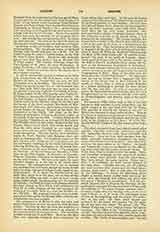

Lescarbot, MARC, French lawyer, writer, and historian, b. at Vervins, between 1565 and 1570; d. about 1629. Curiosity to see the New World and devotion to the public weal prompted him to follow Poutrincourt to Port-Royal, in Acadia, in 1606. His proficiency in Christian doctrine enabled him to instruct the Indians of the neighborhood of Port-Royal. His material aid to the settlers was not less efficient: he built a gristmill for their wheat, a still to produce tar, and ovens for making charcoal. After his return to France (1607), he published (1609), under the title of Histoire de la Nouvelle-France“, a narrative of his voyage which has made his name famous. Lescarbot gives in this work a summary of all the attempts at colonizing made by the French in America, notably in Florida, Brazil, and Acadia, where he himself played an important part. He was long considered an excellent authority, and is still often quoted as an exact, alert, and faithful witness. This work underwent six editions in the beginning of the seventeenth century from 1609 to 1618, and a seventh in 1866. It was first translated into English in 1609, and a translation, by L. W. Grant, was published in 1907. Lescarbot also wrote “Adieux a la France” (1606); “Les Muses de la Nouvelle-France” (1609); “La (Waite des sauvages amouchiquois par le Sagamo Membertou” (1609). After a journey in Switzerland, he published (1613), in verse, “Tableau des treize Cantons”
LIONEL LINDSAY

